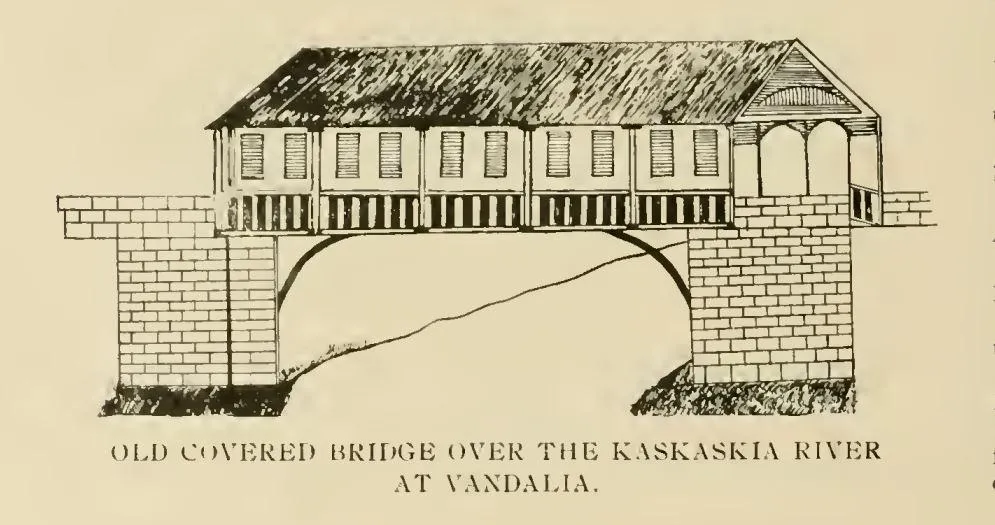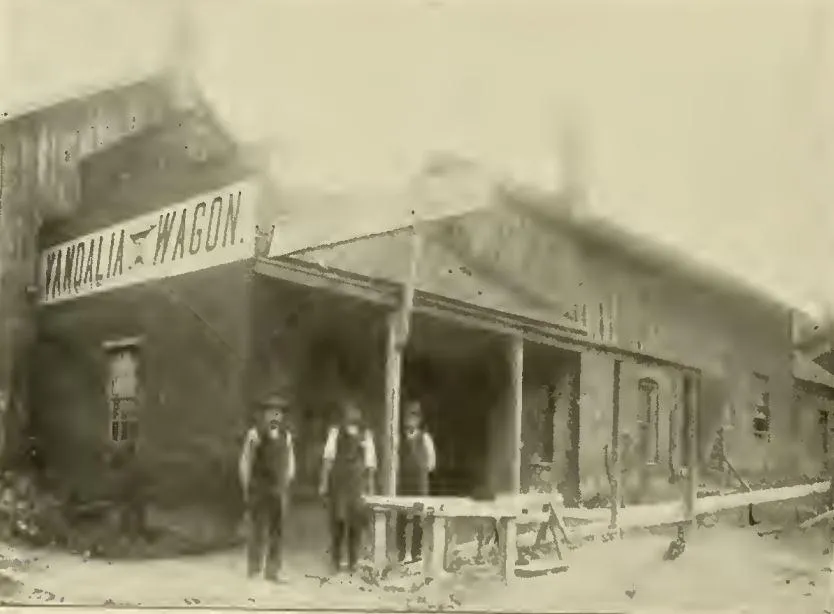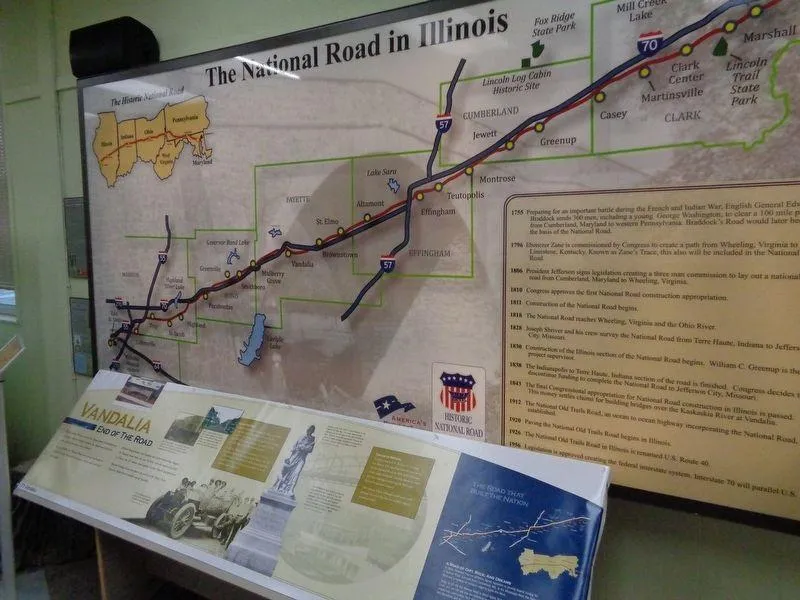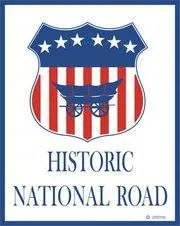Connecting East to West
The National Road is called the "Road that Built America," because it was the first highway in American history, creating a connection between the young nation's eastern seaboard with its newly settled interior.
History
Of the National Road


As America expanded and settlers moved westward, the federal government in Washington, D.C. recognized the need for a major road. George Washington, the nation's first president, was among the earliest advocates for this endeavor.
After much deliberation, President Thomas Jefferson approved the plan in 1806, designating Cumberland, Maryland, as the starting point. This decision led to the National Road being commonly referred to as "The Cumberland Trail."
Jefferson's treasury secretary, Albert Gallatin, secured the initial funding for construction, which began in 1811. By 1838, the road extended through Maryland, Pennsylvania, West Virginia, Ohio, Indiana, and Illinois.
At that time, the National Road passed by the state capital building in Vandalia, Illinois, its western terminus. The road crossed the Okaw, or Kaskaskia River, via a remarkable limestone bridge praised as one of the finest of its kind in the United States.
Constructed from stone quarried ten miles north along Ramsey Creek that was brought to the site by ox-drawn wagons, the bridge, spanned 190 feet in length and 10 feet in width. The covered bridge featured exquisite masonry work, two roadways, sidewalks, and even windows along its structure. Sided with tongue-and-groove lumber and topped with wooden Dividershingles, it was a notable engineering achievement of its time.
Transportation
On the National Road

Your Paragraph text goes Lorem ipsum dolor sit amet, consectetur adipisicing elit. Autem dolore, alias, numquam enim ab voluptate id quam harum ducimus cupiditate similique quisquam et deserunt, recusandae. here

In its early days, transportation to and from Vandalia along the National Road relied on Conestoga wagons, later giving way to carriages, buggies, and stagecoaches. The town supported at least two wagon makers—Lynch's Wagon Manufactory and the C. Gloede Wagon Works.
The Conestoga was a big, covered wagon that can be likened to the "semi-truck of the 1800s." It could be up to twenty-six feet long and weigh more than a ton.
The arrival of the Overland Stage Line was a highly anticipated event, signaled by the sound of ringing bells adorning the horses' harnesses. . This call would draw townspeople to gather, eager for mail and news from distant neighbors and family members.
Construction on the National Road came to a halt in the 1830s due to lack of funding, making Vandalia its western terminus. At the time, the town had a population of about 2,500. However, when the state capital was relocated to Springfield in 1839, Vandalia’s population quickly declined.
Today
On the National Road

In the 1920's paving of a new road from east to west began using the same trail as the National Road. This road is now called U.S. Route 40.
Today the National Road in Illinois covers 164 miles from Marshall and the Wabash Valley to East St. Louis and the Mississippi River. Seven Illinois counties—Clark, Cumberland, Effingham, Fayette, Bond, Madison, and St. Clair—are its home.
Communities along the National Road include Altamont, Brownstown, Cahokia Mounds, Casey, Collinsville, Effingham, Fairmont City, Greenville, Greenup, Highland, Jewett, Marshall, Martinsville, Montrose, Mulberry Grove, Pocahontas, St. Elmo, St. Jacob, Smithboro, Teutopolis, Troy, Vandalia.
